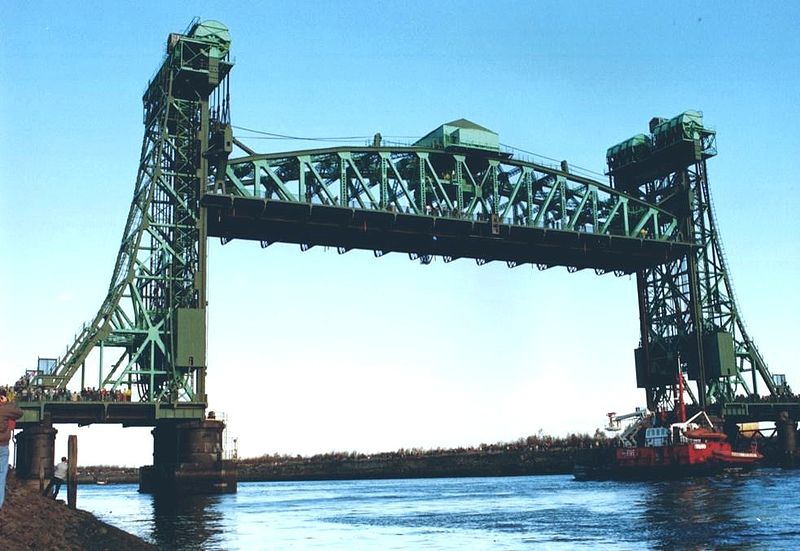| |||||||
Europe
North AmericaSouth AmericaAsiaAustralia and OceaniaAfrica |
Смотрите также: Tees Newport Bridge Opened to traffic on 28 February 1934 by the Duke of York, the Tees Newport Bridge spans the River Tees a short distance upriver from Middlesbrough Transporter Bridge, linking Middlesbrough with the borough of Stockton-on-Tees, England.
Tees Newport Bridge Official name Tees Newport Bridge Carries Motor vehicles Crosses River Tees Locale Middlesbrough, England Designer Mott, Hay and Anderson Design Vertical lift Material Steel, concrete Piers in water 2 Longest span 82m (270ft) Number of spans 9 Opening date 28 February 1934
Designed by Mott, Hay and Anderson and built by local company Dorman Long, who have also been responsible for such structures as the Tyne Bridge and Sydney Harbour Bridge, it was the first large vertical lift bridge in Britain. The bridge was opened by the Prince Albert, Duke of York (later King George VI). Constructed around twin 182ft (55m) lifting towers, the 270ft (82m) bridge span, weighing 2,700 tonnes, could be lifted by the use of two 325 H.P. electric motors at 52ft per minute to a maximum height of 120ft (37m). In the event of motor failure a standby 450 H.P. petrol engine could be employed to move the bridge, but should both systems fail it was possible to raise or lower the span manually using a winch mechanism. It was estimated in 1963 by Mr R. Batty, long time Bridge Master at Newport Bridge, that "it would take 12 men eight hours" to complete the movement by hand. Originally 12 men would have been employed to man the bridge around the clock, usually requiring four to drive it at any one time. This was accomplished from the oak-panelled winding house situated midway along the bridge span. During the 1940s and early 1950s this would occur up to twice a day with an average of 800 vessels per week passing under it, however, as the number of ships needing to sail up to Stockton-on-Tees declined, so did the usage of the bridge. Comments: 0 |
|
|||||








































